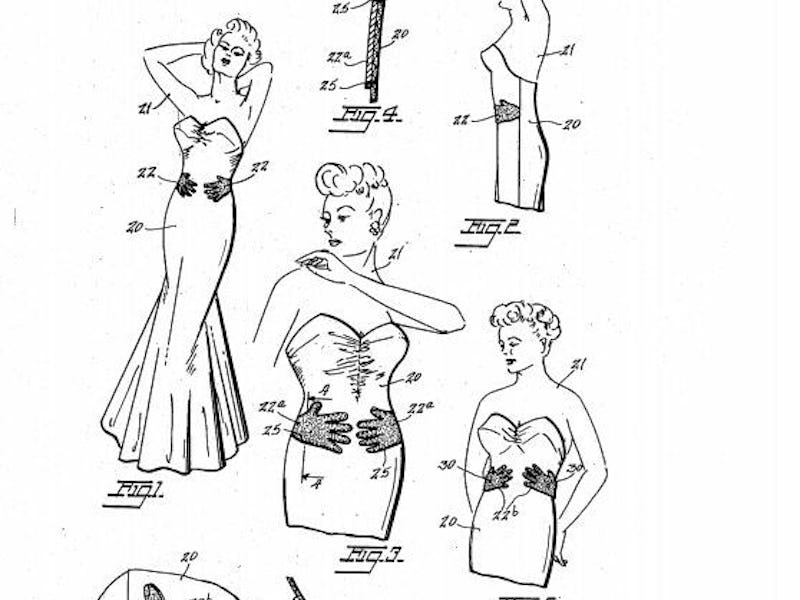Today, “radium-treated addenda” is not a phrase that gets tossed around casually. Back in the day, that was a whole different story. After radium’s discovery and before we figured out how dangerous it was, the glowing radioactive element was jammed into consumer goods as varied as paint to chocolate to clocks. By the ‘20s, workers were suing their employers for too much contact with radium — though, apparently, it was still OK with the U.S. Patent and Trademark Office to weave radium into clothes in 1951.
But Loretta Montez’s Dancing Costume was not just a dress with radium hands tacked on. It was a dress with radium hands tacked on to give the “realistic illusion” of a dancing partner, as long as you’re dancing in ultraviolet light and everyone watching thinks glowing, disembodied hands are simply a sign of well-cultured youth.
The only things real about the mannequin on the left are his dangerous mitts.
Here’s the single, marathon run-on summary sentence of U.S. Patent No. 2,681,449. Deep breath:
A dancing costume for a female dancer adapted to create the illusion of a male dancing partner comprising an article of clothing including a female hollow dress including a bodice portion and a skirt portion constituting one side of the article, a fragment of a man’s suit of clothing constituting the other side of the article including a portion of a coat, one arm portion and a trouser leg portion, said coat and arm portion being stuffed; said stuffing including the representation of a male head above the neck portion of the coat, said dress and suit being disposed in side by side erect posture, the adjacent sides of the dress and suit merging at the center of the article, and a device in simulation of a male hand supported on the hip portion of the skirt on the side thereof remote from the suit; said device being treated with radium, said dress having an opening for receiving the body of the wearer and having a side opening communicating with the leg portion whereby one leg of the wearer may be extended into the leg portion, the stuffing material in the coat having a cavity to receive one arm of the wearer.
That seems like a lot of effort to pretend you’re taken, but we guess we’ve never had to fend off overeager dudes at a sock-hop. Plus, no one is gonna mess with a guy sporting green magic fingers.
